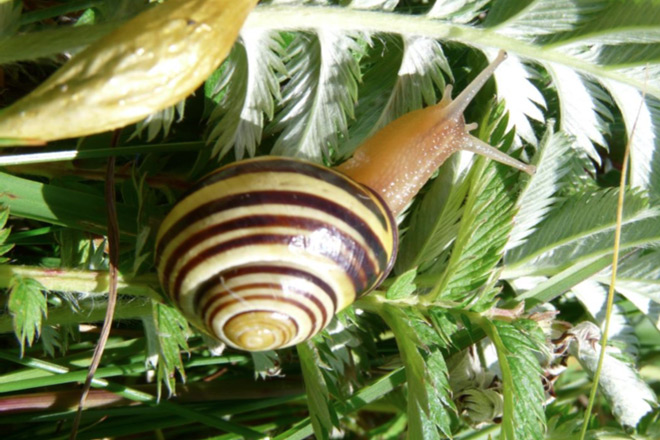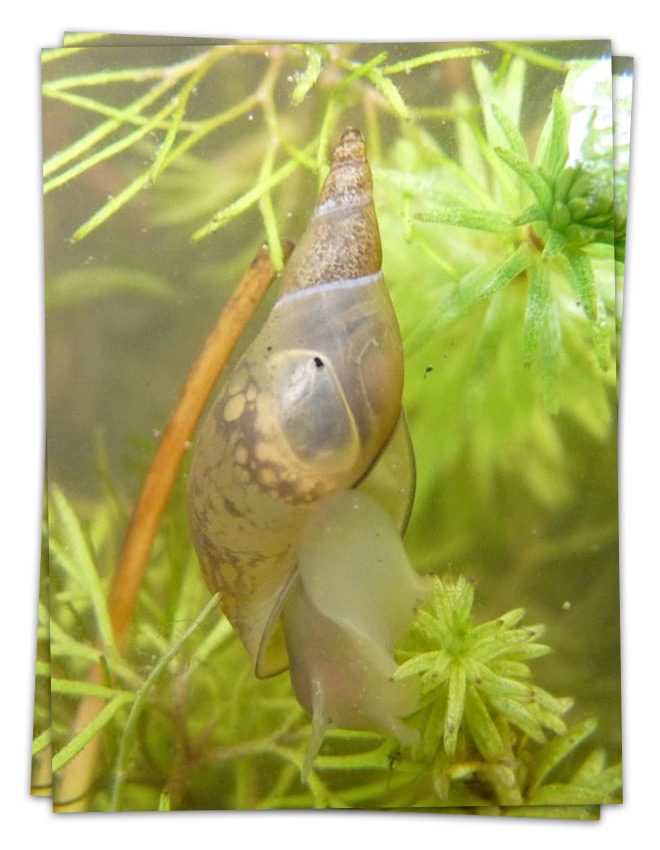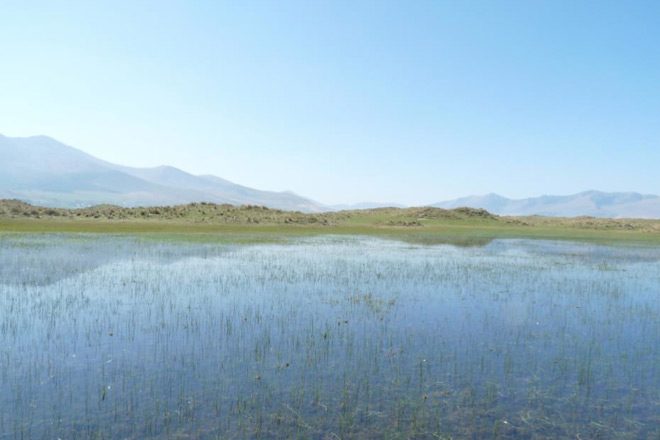

In praise of snails

November 6, 2015
Snails have been a major feature of my life recently. Tiny snails. Sometimes when I close my eyes at night I see thousands of tiny snails falling down in space. It’s easy to lose perspective when you spend the day looking down a microscope, so sometimes it is good to stand back and get a wider point of view.
If we think if life on earth as a hierarchy of things that eat other things, starting with plants eating sunlight and moving on to plant-eaters and meat-eaters, snails can be placed fairly low down and also quite high up on that list. The most reviled snail in an urban garden, Cornu aspersum, eats living plants, but they can also be carnivorous, like the rosy wolfsnail which has devastated native snail species in Hawaii, and some snails eat rotting dead matter. By recycling organic material they are part of the huge team of species which help to maintain the flow of energy and nutrients among living things and back to the earth. They are often dinner themselves. Some of our rarest species in Ireland are partial to a slimy snack. The gillarroo, a trout which is only known from a single lake in northwest Ireland, ekes out its precarious existence on a diet of aquatic snails and caddisfly larvae.

Being part of the food chain is an important feature, but a common one. Snails have a rarer talent, however: they can concentrate calcium from their food into a hard external shell. The shell is a bit of a paradox for snails. It is a genius idea to have a little castle on your back where you can retreat if you need to. On the other hand, the shell is a prize for other animals. In Britain, birds use the calcium stored in snail shells as a natural mineral supplement for egg making. Elsewhere, animals such as tortoises supplement their diet using snail shells.
Snail shells are more than just a tasty morsel. If you spent much time playing in rock pools as a child, you might remember hermit crabs which live in periwinkle shells. It is not just crabs, though; Osmia aurulenta is a solitary bee which nests in empty snail shells. The bee, in turn, supports a parasitic wasp which lays its egg in the bee’s nest. When it hatches, the wasp larva eats first the bee’s egg and then compounds the offence by eating its food stores.
Snails play host to a few of their own parasites, including one which can turn them into zombies. After being infected by a sneaky flat worm, the snail’s tentacles swell and start to pulsate. Under the influence of the parasite, the snail moves out of shelter, and with a bulbous beacon on its head is eaten by a hungry bird. The bird flies off, spreading the parasites to a new region with new hosts. This is a bit disgusting, but another flatworm, the liver fluke, costs the agriculture industry worldwide 25 billion euro a year. Cows which eat infected snails lose condition and productivity drops. And guess who gets the blame? Our poor snails, which are first compelled to throw themselves in the path of oncoming cows and then vilified as vectors.
But I don’t want to leave you filled with disgust, so here is a story about the beauty of snails and the elegance of natural processes. Banded snails are large and striking, coming in a range of pastel shades, with or without spiral stripes. These colours can seal a snail’s fate. The snails of the commonest type are likely to be preyed on more than the rarer varieties, and not just because they are easier to find; if a thrush eats a common, yellow snail and likes the taste, it will look for more yellow snails. The yellow snails take a hit until they are too hard to find and the thrush is forced to try another option: pink snails. While pink snails are flavour on the month, yellow snails can rebuild their numbers until they are far more frequent than pink snails, ready for the moment when thrushes get hungry and switch prey colour again. By moving from one colour of snail to another, the thrushes ensure that different colour variations are maintained within snail populations.

All in all, there is a lot more to the little snail than meets the eye. They provide an energy source, a mineral supplement and a home for a variety of other animals, and there is so much more than I can fit into a blog (look up love-darts, they are amazing). Like most life on earth, though, they have not gone untouched by the rise of humans. As natural habitats are replaced by urban sprawl, agriculture and golf courses, snails can be squeezed out. While they have many excellent characteristics, speed is not one of them, so escape is not an easy option. The fate of this blog’s slimy subject may feel very removed from your life, but remember, each time we lose a species to extinction, we lose the services it provides – the energy transfer, the transport of calcium, the homes for other creatures. They may lack charisma, but next time you feel the tell-tale crunch underfoot on a damp evening, spare a thought for the helpful qualities of the humble snail.

November 2015
You might also be interested in...
Van Walt Guidelines for sampling for PFAS in Groundwater
November 13, 2024We need to make clear, that at the time of writing, there are no ISO or EN standards which deal with the sampling of groundwater for PFAS.
Read MoreSpot measurement v. continuous environmental monitoring
August 25, 2023Environmental monitoring has developed considerably over the years. From the time when a consultant went out monthly or quarterly with a dip tape to monitor the groundwater level in a borehole, wind forward...
Read MoreMeasuring Nitrates (NO3, NO3-N) in the field
June 20, 2023The interest in Nitrates is nothing new. One way or another we have been measuring them for half a century.
Read MoreVan Walt Environmental Equipment
A small selection of our environmental equipment